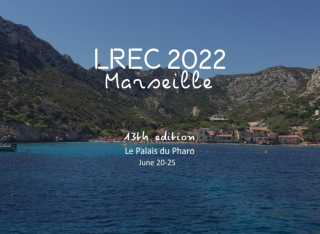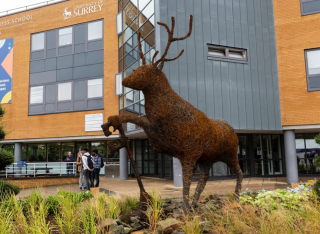
Dr Tomasz Korybski PhD
Academic and research departments
Faculty of Arts, Business and Social Sciences, Centre for Translation Studies.About
Biography
I am a graduate of the University of Warsaw, Institute of Applied Linguistics (2004). After obtaining my MA degree, I started my own business as a freelance conference interpreter and translator and continued my academic development at the University of the West of England where I pursued PhD studies in bilingualism and code-switching. I passed my final viva in 2013 and decided to switch my academic interests entirely to Translation and Interpreting. In the years 2009-2019 I taught practical interpreting and translation skills at the University of Warsaw and other HEIs in Poland. I also implemented my first small-scale research projects in the area, while continuing to provide interpreting and translation services for clients from corporates, NGOs and public institutions. My practical and academic experience enabled me to join Surrey's Centre for Translation Studies in October 2019, where I'm now excited to embark on new research projects in Interpreting & Technologies. I am particularly interested in Remote Simultaneous Interpreting technology as well as hybrid (man+machine) solutions in conference interpreting.
Areas of specialism
University roles and responsibilities
- Research Fellow
My qualifications
Previous roles
Publications
This handbook provides a comprehensive overview of the history, development, use, and study of the evolving relationship between interpreting and technology, addressing the challenges and opportunities brought by advances in AI and digital tools.Encompassing a variety of methods, systems, and devices applied to interpreting as a field of practice as well as a study discipline, this volume presents a synthesis of current thinking on the topic and an understanding of how technology alters, shapes, and enables the interpreting task. The handbook examines how interpreting has evolved through the integration of both purpose-built and adapted technologies that support, automate, or even replace (human) interpreting tasks and offers insights into their ethical, practical, and socio-economic implications. Addressing both signed and spoken language interpreting technologies, as well as technologies for language access and media accessibility, the book draws together expertise from varied areas of study and illustrates overlapping aspects of research.Authored by a range of practicing interpreters and academics from across five continents, this is the essential guide to interpreting and technology for both advanced students and researchers of interpreting and professional interpreters.
This chapter reviews quality as a multifaceted and highly debated yet central concept within interpreting studies. It highlights the crucial relevance of quality with regards to deepening our understanding of the influence of different technology-related modalities of interpreting on current and future practice. The chapter begins by revisiting foundational dimensions of quality in interpreting and examines the key challenges posed by the intersection of technology and interpreting. It then synthesises how quality can be evaluated and measured and considers the added complexities introduced by technology. To this end, this chapter provides a comprehensive review of the methods and perspectives used to assess quality in various technologised workflows, grouping them into three categories, namely, top-down, bottom-up, and automated methods. The chapter also demonstrates how technology integration into different interpreting practices makes the process of assessing quality even more intricate, yet increasingly needed, while also outlining the benefits and drawbacks of technology-driven quality assessment. The chapter concludes by discussing future developments, particularly the need for a hybrid approach to quality evaluation that balances scalability with deeper, more nuanced insights to address the complex, nuanced interplay between interpreting and technology.
In this paper, we present a semi-automated workflow for live interlingual speech-to-text communication which seeks to reduce the shortcomings of existing ASR systems: a human respeaker works with a speaker-dependent speech recognition software (e.g., Dragon Naturally Speaking) to deliver punctuated same-language output of superior quality than obtained using out-of-the-box automatic speech recognition of the original speech. This is fed into a machine translation engine (the EU's eTranslation) to produce live-caption ready text. We benchmark the quality of the output against the output of best-in-class (human) simultaneous interpreters working with the same source speeches from plenary sessions of the European Parliament. To evaluate the accuracy and facilitate the comparison between the two types of output, we use a tailored annotation approach based on the NTR model (Romero-Fresco and Pochhacker, 2017). We find that the semi-automated workflow combining intralingual respeaking and machine translation is capable of generating outputs that are similar in terms of accuracy and completeness to the outputs produced in the benchmarking workflow, although the small scale of our experiment requires caution in interpreting this result.
Remote Simultaneous Interpreting (RSI) platforms enable interpreters to provide their services remotely and work from various locations. However , research shows that interpreters perceive interpreting via RSI platforms to be more challenging than on-site interpreting in terms of performance and working conditions [1]. While poor audio quality is a major concern for RSI [2,3], another issue that has been frequently highlighted is the impact of the interpreter's visual environment on various aspects of RSI. However, this aspect has received little attention in research. The study reported in this article investigates how various visual aids and methods of presenting visual information can aid interpreters and improve their user experience (UX). The study used an experimental design and tested 29 professional conference interpreters on different visual interface options, as well as eliciting their work habits, perceptions and working environments. The findings reveal a notable increase in the frequency of RSI since the beginning of the COVID-19 pandemic. Despite this increase, most participants still preferred on-site work. The predominant platform for RSI among the interpreters sampled was Zoom, which has a minimalist interface that contrasts with interpreter preferences for maximalist, information-rich be-spoke RSI interfaces. Overall, the study contributes to supporting the visual needs of interpreters in RSI.
The emergence of Simultaneous Interpreting Delivery Platforms (SIDPs) has opened up new opportunities for interpreters to provide cloud-based remote simultaneous interpreting (RSI) services. Similar to booth-based RSI, which has been shown to be more tiring than conventional simultaneous interpreting and more demanding in terms of information processing and mental modelling [11; 12], cloud-based RSI configurations are perceived as more stressful than conventional simultaneous interpreting and potentially detrimental to interpreting quality [2]. Computer-assisted interpreting (CAI) tools, including automatic speech recognition (ASR) [8], have been advocated as a means to support interpreters during cloud-based RSI assignments, but their effectiveness is under-explored. The study reported in this article experimentally investigated the impact of providing interpreters with access to an ASR-generated live transcript of the source speech while they were interpreting, examining its effect on their performance and overall user experience. As part of the experimental design, 16 professional conference interpreters performed a controlled interpreting test consisting of a warmup speech (not included in the analysis), and four speeches, i.e., two lexically dense speeches and two fast speeches, presented in two different interpreting conditions, i.e., with and without ASR support. This article presents initial quantitative findings from the analysis of the interpreters' performance, which was conducted using the NTR Model [17]. Overall, the findings reveal a reduction in the total number of interpreting errors in the ASR condition. However , this is accompanied by a loss in stylistic quality in the ASR condition.
Remote simultaneous interpreting (RSI) draws on Information and Communication Technologies to facilitate multilingual communication by connecting conference interpreters to in-presence, virtual or hybrid events. Early solutions for RSI involved interpreters working in interpreting booths with ISOstandardised equipment. However, in recent years, cloud-based solutions for RSI have emerged, with innovative Simultaneous Interpreting Delivery Platforms (SIDPs) at their core, enabling RSI delivery from anywhere. SIDPs recreate the interpreter's console and work environment (Braun 2019) as a bespoke software/videoconferencing platform with interpretation-focused features. Although initial evaluations of SIDPs were conducted before the Covid-19 pandemic (e.g., DG SCIC 2019), research on RSI (booth-based and software-based) remains limited. Pre-pandemic research shows that RSI is demanding in terms of information processing and mental modelling (Braun 2007; Moser-Mercer 2005), and suggests that the limited visual input available in RSI constitutes a particular problem (Mouzourakis 2006; Seeber et al. 2019). Besides, initial explorations of the cloud-based solutions suggest that there is room for improving the interfaces of widely used SIDPs (Bujan and Collard 2021; DG SCIC 2019). The experimental project presented in this paper investigates two aspects of SIDPs: the design of the interpreter interface and the integration of supporting technologies. Drawing on concepts and methods from user experience research and human-computer interaction, we explore what visual information is best suited to support the interpreting process and the interpreter-machine interaction, how this information is best presented in the interface, and how automatic speech recognition can be integrated into an RSI platform to aid/augment the interpreter's source-text comprehension.

